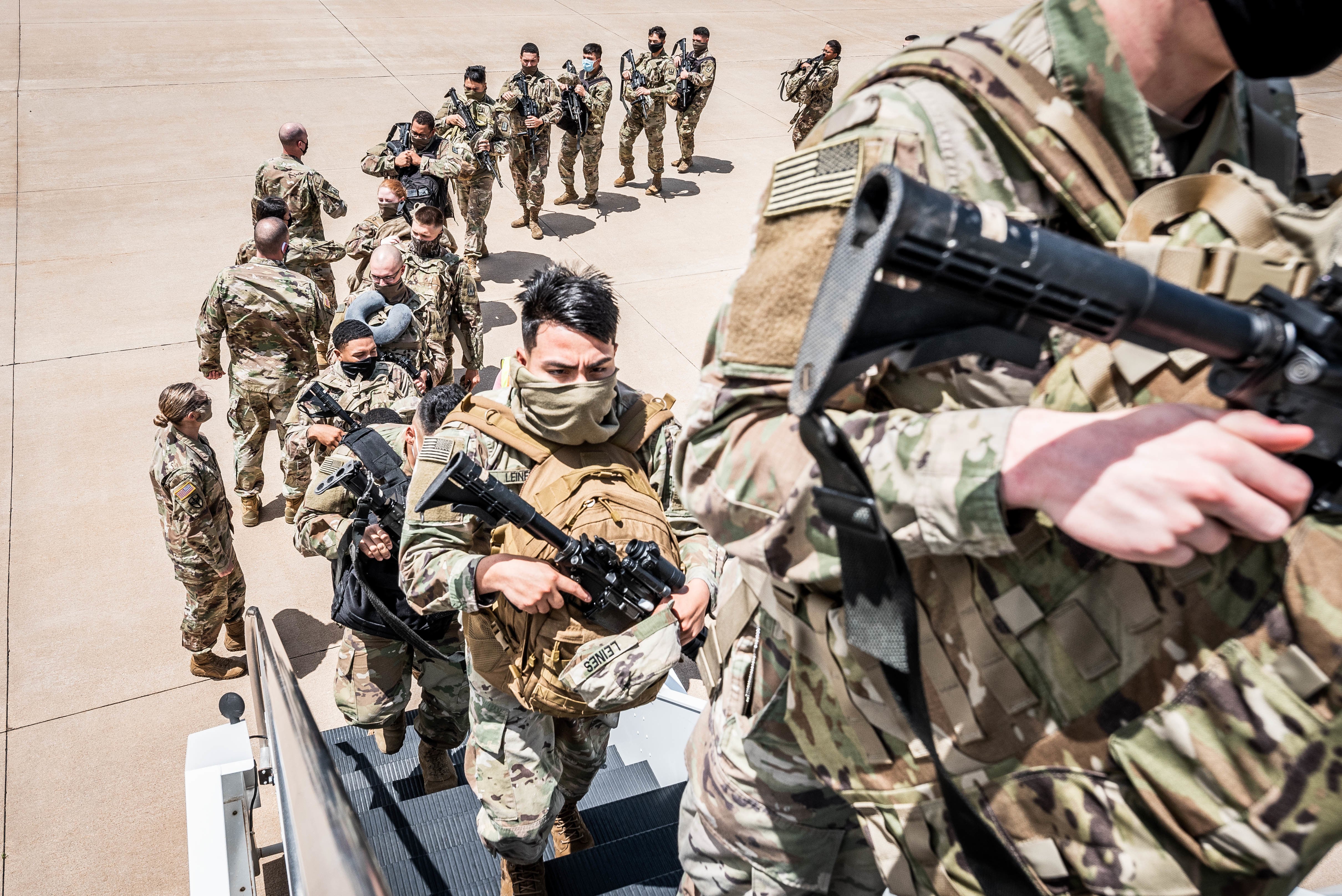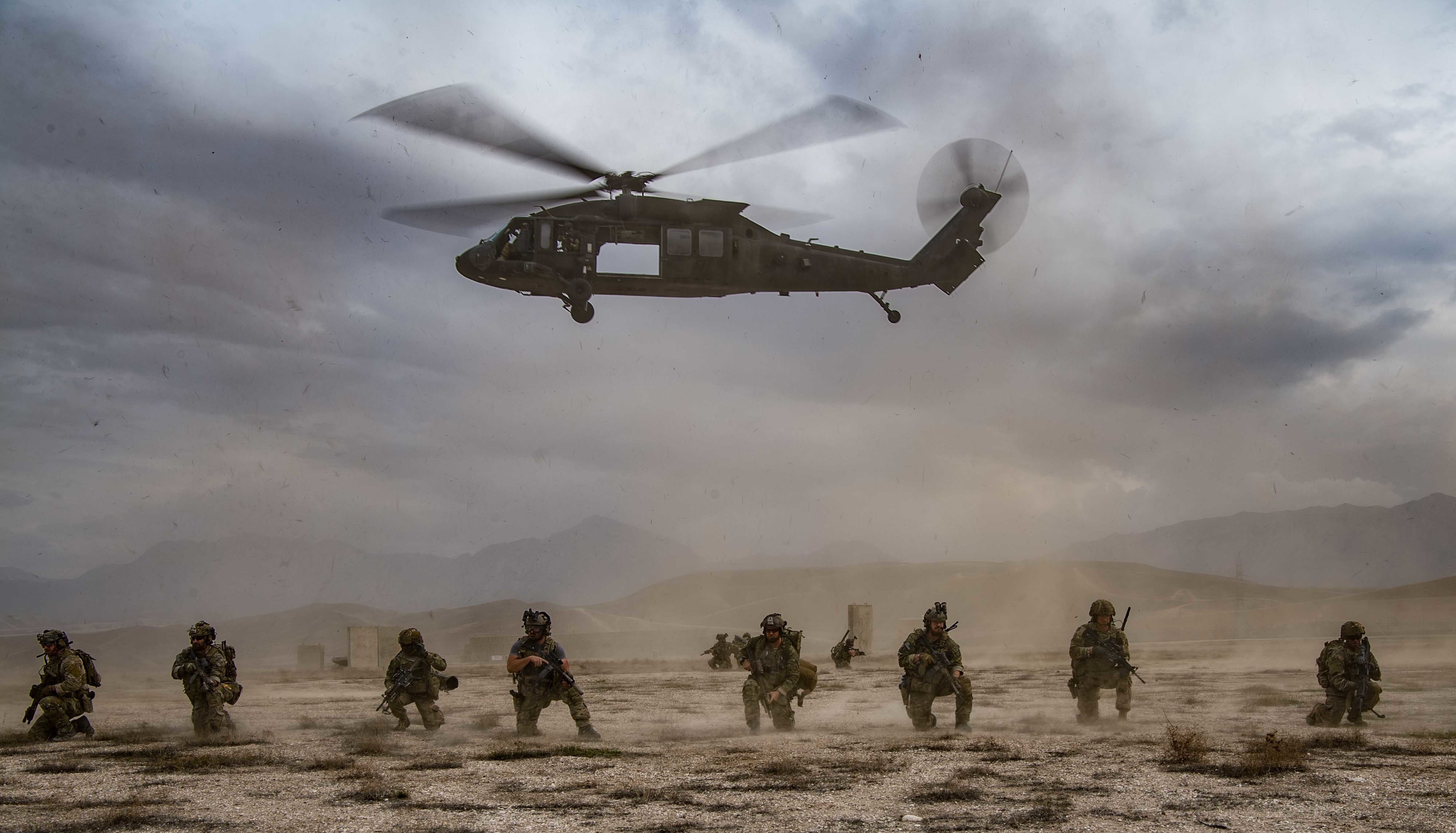Ending the U.S. military presence in Afghanistan won’t be of much use to Army planners sweating the size of the force, as fiscal constraints loom large over the service in the coming years.
The Army’s end-strength growth, once expected to top 500,000 active-duty soldiers, has slowed to a crawl in recent years and currently sits at roughly 485,000 troops.
“This is the same size Army that we had on 9/11, and when I take a look at what the requirements are, when I take a look at what historically we needed, and now that we’re in a time of great power competition, I’m very, very concerned about the size of the Army,” Chief of Staff Gen. James C. McConville said during a Tuesday discussion at the Center for a New American Security.
Much of the strain on the Army’s size comes from the combatant commands, where soldiers make up the bulk of military personnel deployed across the world. But the impending withdrawal from Afghanistan, in U.S. Central Command’s area of responsibility, won’t make much of a difference.
“The number of troops in Afghanistan is really not a significant amount,” McConville said when asked how the withdrawal would factor into end-strength woes.
Growing the Army also doesn’t appear to be happening in the current fiscal environment, unless the service cuts into readiness and modernization funding.
“The [Army] secretary and I both agree that we can’t do the things, as far as readiness and when it comes to modernization, if we were to grow the Army to the level that we think would reduce the stress of deployments for our troops,” McConville said. “What we’re trying to do is produce the best Army we can with the resources that we’re going to get.”
RELATED

President Joe Biden’s fiscal 2022 budget request asks for $715 billion for the Defense Department. The Army’s top line has not yet been revealed, but defense officials have said they’re bracing for a possible budget cut.
Even flat budgets have required Army leaders to fund their key modernization initiatives, like long-range fires, by culling lower priority programs and shifting around billions of dollars.
The Army has carried that process out for the past few years, but leaders have run out of fat to trim, according to acting Secretary of the Army John Whitley.
“We’ve rebuilt readiness. We’re in a good state with readiness, but that is fragile, and it could be reversed,” said Whitley. “We’re in a good place moving out on modernization, but that requires consistent, sustained funding to see through and deliver products to our soldiers.”
If the budget declines, Whitley noted, the current operations tempo would have to give.
“There’s a tremendous amount of risk in the Army’s budget today,” Whitley added. “The simple fact is, we took risk in the budget to get to where we are today, so there’s not a lot of excess that can be used.”
The Army accounts for about 25 percent of the Defense Department’s budget and about 35 percent of the active-duty end strength of the department.
“But we’re over 50 percent of the current operating tempo of the Department of Defense,” Whitley said. “We’re two-thirds of the readiness demands and the readiness priorities for warfighting of the Department of Defense.”
“The Army cannot sustain that level of commitment and operating tempo and readiness for such a wide range of things in a declining budget environment — and that’s the simple math,” Whitley said.
Kyle Rempfer was an editor and reporter who has covered combat operations, criminal cases, foreign military assistance and training accidents. Before entering journalism, Kyle served in U.S. Air Force Special Tactics and deployed in 2014 to Paktika Province, Afghanistan, and Baghdad, Iraq.





